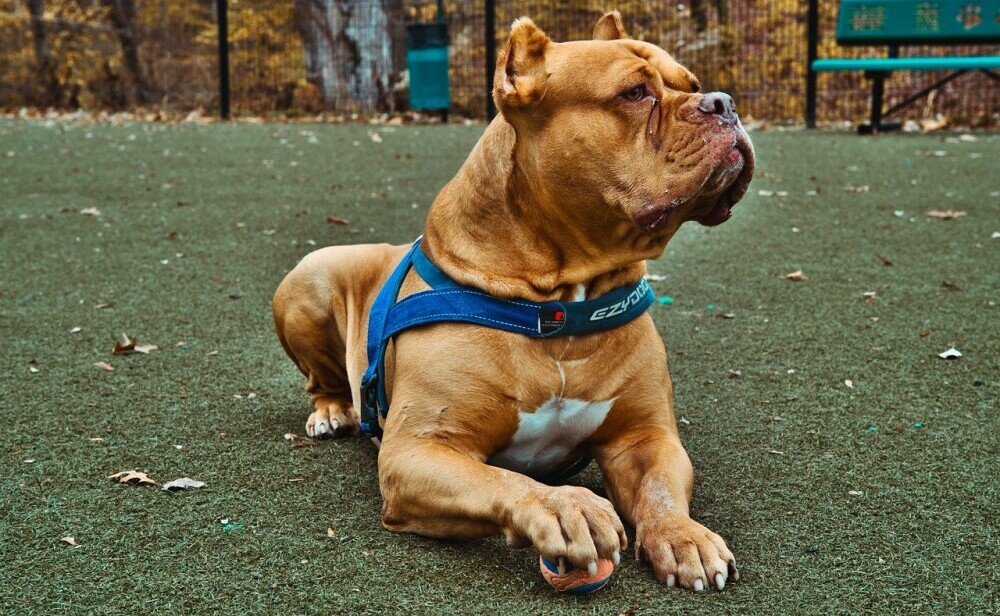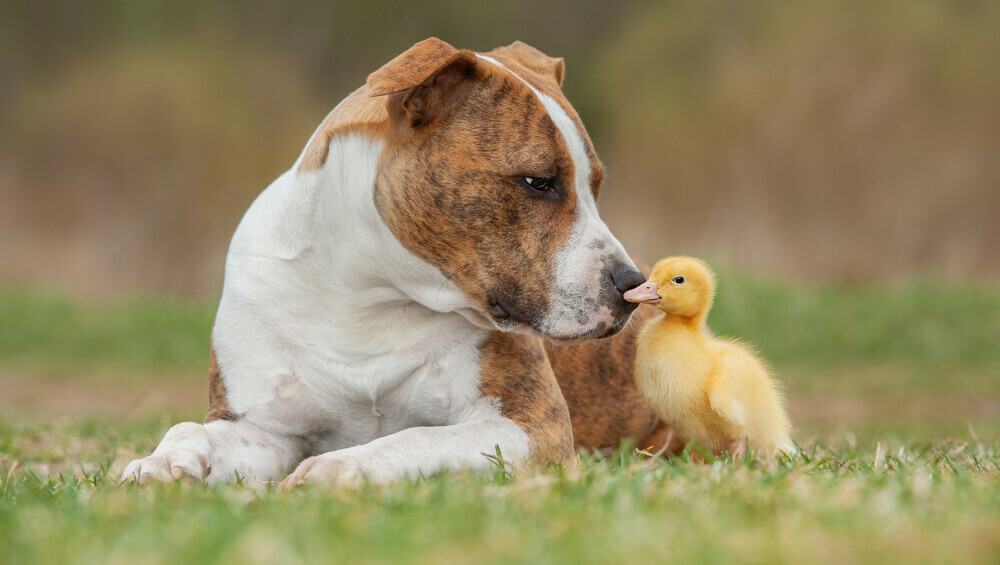Introducing Pit Bulls To Other Animals: Dogs, Cats, And More
 I often hear stories wrapped in fear and misunderstanding about pit bulls. Yet, as I’ve experienced firsthand, these dogs are far from the menacing creatures they’re sometimes made out to be. To set the record straight, pit bulls often exhibit a friendly and loyal demeanor, contrary to the unfriendly image often portrayed in media.
I often hear stories wrapped in fear and misunderstanding about pit bulls. Yet, as I’ve experienced firsthand, these dogs are far from the menacing creatures they’re sometimes made out to be. To set the record straight, pit bulls often exhibit a friendly and loyal demeanor, contrary to the unfriendly image often portrayed in media.
Socialization plays a critical role in molding the temperament of any dog, and pit bulls are no exception. Exposure to different people, environments, and animals from a young age can foster a more adaptable and friendly pit bull. Your pit bull’s behavior towards other animals is influenced not just by their socialization history but also by their individual personality, past experiences, and even day-to-day mood.
Before making introductions to other animals, consider how well-socialized your pit bull is. Have they had positive experiences with other dogs or cats before? Are they generally relaxed around new experiences? These questions help determine the next steps. A well-prepared introduction can facilitate harmony between your pit bull and new animal friends, which leads us into the preparation phase.
Preparing Your Pit Bull for Introductions
 You’re considering how to introduce your pit bull to other animals. It’s a responsible thought. Ensuring your pit bull is prepared is crucial for a positive encounter. Their ability to play nicely with others doesn’t happen by chance; it’s a process. You need to gauge if your pit bull is ready for this significant step.
You’re considering how to introduce your pit bull to other animals. It’s a responsible thought. Ensuring your pit bull is prepared is crucial for a positive encounter. Their ability to play nicely with others doesn’t happen by chance; it’s a process. You need to gauge if your pit bull is ready for this significant step.
First, analyze your pit bull’s behavior. Have they been socialized? Do they respond to basic commands like ‘sit’, ‘stay’, ‘come’, and ‘leave it’? Training provides them with the skills they’ll need to interact safely and respectfully with other animals. If your dog is still working on these basics, it’s best to solidify this foundation before forging ahead with introductions.
Positive reinforcement is your friend here. Reward your pit bull for calm, obedient behavior. I stress the word CALM, because high energy levels can provoke or scare other animals. Use treats, praise, and affection to reinforce behaviors you want to see during introductions.
Remember, your role as a guide can’t be understated. Your presence provides reassurance and authority. You’ll be there to intervene if necessary, and this layer of security makes all the difference. Keeping leashes at a comfortable slack allows dogs to feel a semblance of freedom while still under your control.
With these strategies in place, you can be confident in moving onto the next phase: the actual meeting. It’s where your groundwork is put to the test as your pit bull embarks on forming new animal relationships.
Successful Introductions: Pit Bulls Meeting Other Dogs
 When I introduce my pit bull to another dog, environment is the stage for either friendship or foul play. I choose NEUTRAL GROUND, like a park where neither dog feels possessive. Two dogs on leashes, sniffing the air and aware of each other, yet not close enough to touch, is how I start. It’s similar to reading a headline before diving into the article.
When I introduce my pit bull to another dog, environment is the stage for either friendship or foul play. I choose NEUTRAL GROUND, like a park where neither dog feels possessive. Two dogs on leashes, sniffing the air and aware of each other, yet not close enough to touch, is how I start. It’s similar to reading a headline before diving into the article.
I observe their BODY LANGUAGE meticulously. A relaxed posture, wagging tail, and playful bows are invitations to get nearer. Stiffness, growling, or a fixed gaze are signs to take a step back. It’s about respecting what they’re trying to tell us without words.
The leashes stay on, but I keep the tension out of them during initial encounters. It’s a delicate dance, ensuring they feel secure yet free. As they sniff and circle, I watch like a referee, ready to intervene if the play turns rough. If I remain CALM, they more likely will too.
Positive experiences are the building blocks of friendship. With every walk or play date, I notice my pit bull learning to trust their canine counterparts. The trust goes both ways; I learn to read their signals better, predict their actions, and know when to reward good behavior.
Beyond Canine Companions: Introducing Pit Bulls to Cats and Other Animals
 Stepping beyond the world of dog-to-dog introductions, it’s crucial to approach meetings between pit bulls and other animals, such as cats, with particular care and attention. I’ll guide you on the best practices to ensure that your pit bull can coexist peacefully with different species.
Stepping beyond the world of dog-to-dog introductions, it’s crucial to approach meetings between pit bulls and other animals, such as cats, with particular care and attention. I’ll guide you on the best practices to ensure that your pit bull can coexist peacefully with different species.
Having a keen understanding of the prey drive in pit bulls, or in any dog for that matter, is vital before arranging an introduction with a cat or another animal that might trigger this instinct. Ensuring that your pit bull has adequate training and control commands firmly in place is not just helpful, it’s essential.
Tailoring the introduction process is key, as different animals react uniquely to new encounters. For example, a cat may require more time to adjust to a dog’s presence. Start with controlled, brief exposures and increase the interaction time as both animals become more comfortable.
I cannot stress enough the importance of maintaining a secure environment where both the pit bull and the other animal feel safe. This might involve using barriers like baby gates initially or having a leash on your pit bull for quick intervention if needed.
Throughout this journey, patience is your best friend. Success might not come overnight, but with consistent and careful introductions, many pit bull owners have forged harmonious living situations for their pets. Their stories shine a light on the possibilities and serve as a testament to the fact that with understanding, proper training, and a judicious approach, pit bulls can be part of a diverse animal family.

Courtney Searle
This is such amazing information! I wish we had this much information all the years we have adopted our fur babies?
admin
Thanks! i’m glad you found it helpful!